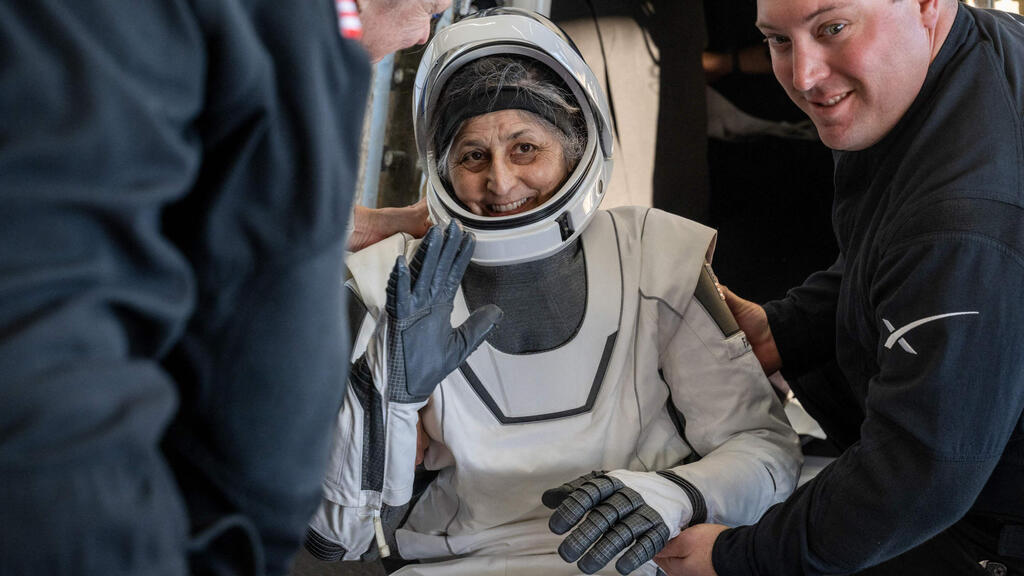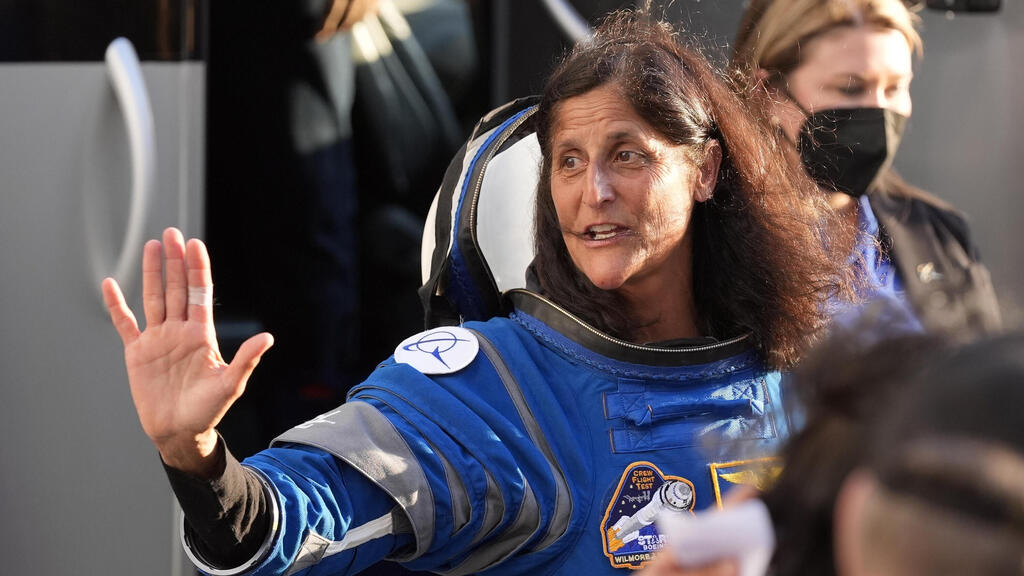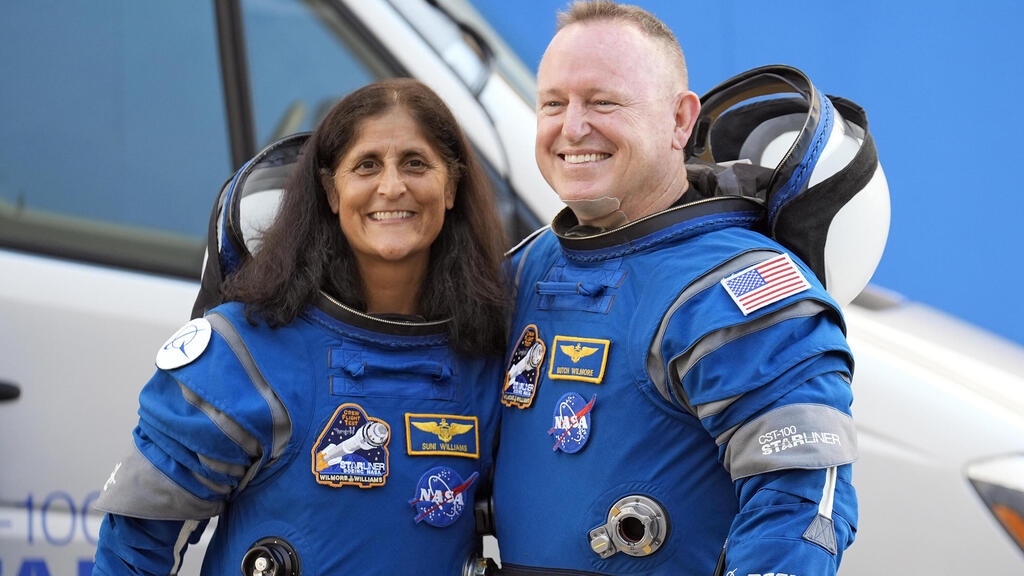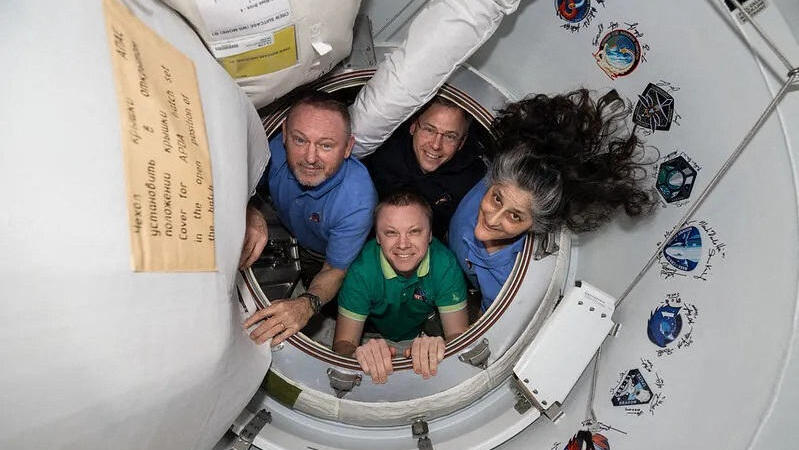Getting your Trinity Audio player ready...
When Sunita “Suni” Williams, 59, launched into space in June 2024, she was known for her dark, voluminous hair — even dubbed the “woman with wild hair” by U.S. President Donald Trump. But after returning last week from a mission originally planned for eight days but extended to 288 days (9.5 months) due to technical issues, her hair had turned nearly white.
The dramatic transformation underscores the toll of prolonged microgravity, radiation exposure and pressure shifts on the human body. Williams and crewmate Barry “Butch” Wilmore, 62, now face a 45-day rehabilitation program at NASA’s Johnson Space Center to address bone loss, muscle atrophy, neurological impacts and other health risks from their extended stay aboard the International Space Station (ISS).
The science behind the damage
“Long-term space missions aren’t unprecedented, but they’re far from safe,” said Dr. Eran Schenker, an Israeli aerospace physician who has advised six space missions, including Israel’s first astronaut, Ilan Ramon, who died in the 2003 Columbia disaster. “Every bodily system deteriorates in space. Nothing good happens to the body up there.”
Bone loss: NASA estimates astronauts lose up to 1% of bone density monthly in microgravity. Over 288 days, Williams may have lost nearly 10%, primarily in weight-bearing bones like the legs, pelvis and spine — significantly raising fracture risks.
 Dr. Eran SchenkerPhoto: Courtesy
Dr. Eran SchenkerPhoto: Courtesy“Without gravity, bones aren’t stressed, so the body breaks them down rapidly,” Schenker explained. “Young astronauts lose as much bone in a month as elderly people do in a year on Earth.”
Muscle atrophy: Despite exercising 2.5 hours daily, Williams appeared frail post-landing. NASA reports astronauts lose up to 10% of muscle mass on long missions, particularly in legs, back and core muscles. “Muscles ‘disintegrate’ without constant Earth-like resistance,” Schenker said.
Cardiovascular risks: Microgravity redistributes fluids evenly, weakening the heart’s pumping strength. Over time, this may cause heart muscle degeneration. “If a child were born in space, their heart might be too small to function on Earth,” Schenker noted.
Balance and vision issues: Returning astronauts often struggle with dizziness and coordination as their inner ear recalibrates to gravity. Williams also experienced Spaceflight Associated Neuro-Ocular Syndrome (SANS), altering her eye structure and vision.
Get the Ynetnews app on your smartphone: Google Play: https://bit.ly/4eJ37pE | Apple App Store: https://bit.ly/3ZL7iNv
Long-term risks: Radiation and accelerated aging
Space radiation poses severe genetic risks. Astronauts on extended missions face DNA damage comparable to “smoking a pack of cigarettes daily,” said NASA nutritionist Dr. Scott Smith. Studies show increased chromosome alterations and cellular aging, akin to findings in NASA’s Twin Study, where astronaut Scott Kelly’s telomeres shortened during a year in space.
“Ionizing radiation shreds DNA strands, accelerating cell death and aging,” Schenker said. “Even skin cells age faster.” Williams’ hair whitening may stem from metabolic imbalances and limited hygiene options — astronauts clean hair with towels, not showers.
Rehabilitation: A 45-day battle
Williams, who ran a marathon aboard the ISS in 2007, now undergoes daily 2.5-hour resistance training, calcium-rich diets and balance therapy. Full recovery may take months, with some bone damage likely irreversible.
Psychological challenges loom large. “Isolation in space breeds profound loneliness,” Schenker said. “What astronauts miss most isn’t gravity or fresh food — it’s their families.” NASA provides psychological support for years post-mission to address reintegration stress and the “Overview Effect,” an existential shift some astronauts experience.
Unanswered questions
While NASA confirmed Williams returned in “good health,” the long-term impacts of radiation and cellular damage remain unclear. “The body can heal but some changes, like immune decline or neurological harm, may persist,” Schenker cautioned.
As SpaceX’s rescue capsule splashed down in the Gulf of Mexico, NASA’s Steve Stich emphasized relief at the crew’s safe return. Yet Williams’ journey underscores a stark reality: Space exploration exacts a heavy price — one humanity is still learning to measure.





